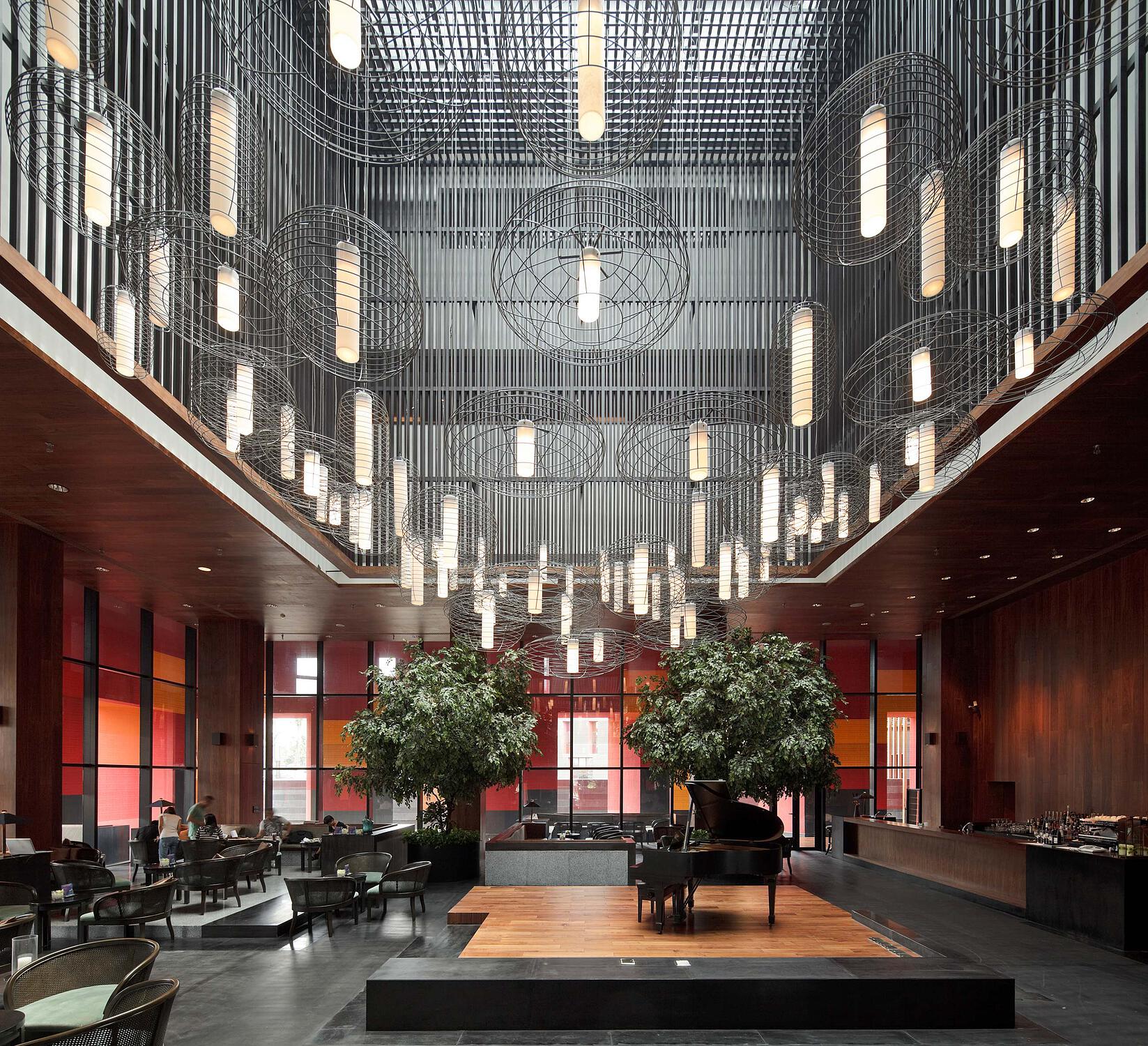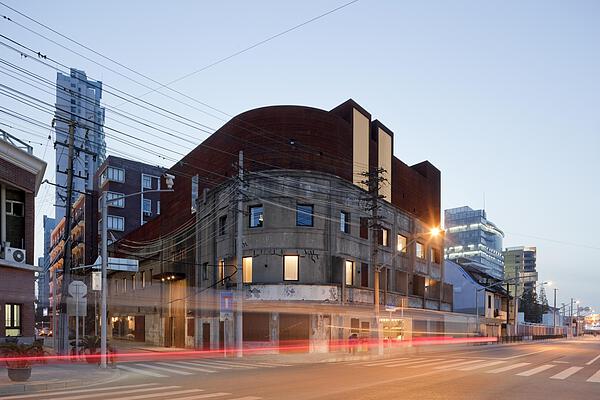Xi’an Westin Hotel & Museum
The Unfolding Courtyard – Xi’an Westin Hotel & Museum
In an ancient capital of China, Neri&Hu Design Research Office’s design of the Westin in Xi’an emerges as a tribute to both the city’s importance as a hub of burgeoning growth in the region, as well as its long standing status as a cradle of Chinese civilization. With 3,100 years of history embedded in the layers of the city, Xi’an is not merely a formidable backdrop to the building itself but has provided the architects with design inspirations that inextricably link its past to its present and future.
Arriving in Xi’an’s historic center, one is immediately struck by the fortress-like expanse of its enveloping city walls, and the architecture of the Westin takes cues from this heavy monumentality. Respectful of its urban context, the dark stucco and stone clad building blocks adopt the profile of vernacular Chinese architecture. While the sloped contours and overhanging eaves of the roof are immediately recognizable, its traditional details have been reduced to the clean lines of a minimalist contemporary architecture. The rhythmic sequence of deep-cut openings on the façade shifts playfully, getting smaller on each subsequent level of the five storey structure, giving the illusion of the building mass tapering as it rises. Each opening, lined in a vibrant red hue, is slanted to direct views to neighboring landmark the Big Wild Goose Pavilion and reveals the thickness of this architecture, as deeply rooted in its history as in the ground itself.
The apparent heaviness of the architectural volumes is constantly juxtaposed against elements which bring a certain lightness to the project. From afar, it becomes apparent that the pitched roof, which is typically quite low and heavy in a traditional Chinese building is here, handled with more delicacy. Bulkiness shed and curves straightened, the roof is lifted from the building mass below by a band of glazing and floats one level above. Approaching it, one discovers that the entire assemblage of buildings is surrounded by a reflective pool of water, leaving the impression of a building that is suspended in an infinite sky. At either of its two main entries, wooden slatted canopies are gently attached to the façade and allow light and shadow to permeate deep into the interior, drawing visitors in further. Once inside, a pleasant surprise awaits, the light which floods in through skylit courtyards carved from each volume, as a piece of landscape implants itself into the center of each block. The architects’ constant effort to extend the exterior into the interior manifests most grandly perhaps in the sweeping set of stairs at the East entry, which brings visitors down two levels below into a large sunken garden at the very heart of the project, around which are located the main public spaces. Like the Neolithic Banpo village on the skirts of Xi’an, or the terracotta warriors for whom millions travel each year to visit, the architecture is a celebration of the subterranean.
Along the journey from the East entry to the central sunken garden is a feature which is unique to the Westin Xi’an, a museum housing ancient mural art from the region. Neri&Hu’s concept for this space is grounded in the basic notion that the display format for murals should be inherently different from the display of any other form of art. As historic objects of art needs strict humidity, lighting, and temperature control, the design of the exhibition space starts with those basic units of exhibition, metal cases hung on bare white walls. Departing from the quintessential “white cube" museum idea here, each unit of display casework is positioned in a way that expresses each case's individuality and the individuality of each work of art within. By detaching the casework from the white wall, and then framing the mural fragments as individual works, one is able to more deeply appreciate each one as a unique art piece.
The Westin Xi’an features three restaurants whose interiors Neri&Hu was also responsible for. The Chinese restaurant is a free-standing building which caps off the sunken garden on the West side, and its detachment from the other buildings allowed the architects to experiment more freely with its massing. Cleverly playing on the notion of the heavy roof, the entire building here is expressed as a Mansard roof which drops so low it appears to only be slightly hovering off the ground. Dormer windows protrude on each side to provide light, and the structure of the roof is exposed on the interior, so that one is constantly reminded of the inhabitation of this roof. The Private Dining Rooms are contained within a brick mass with vertical cuts through it, bringing unexpected light and views to the dining experience. The concept for the Japanese restaurant is derived from the stage of Kabuki theater, where actors surround the audience and perform in the round. In this restaurant, the main circulation paths are elevated around the perimeter, with diners inhabiting the sunken area in between; servers and passersby become performers on stage. Continuing the theme of performance and display, the All-day-dining restaurant features glass encased dining and buffet areas in the center of the space. Like a marketplace display vitrine, the food and spectacle of feasting become focal points.
With Neri&Hu Design Research Office’s fresh take on historic references, the Westin Xi’an pays due homage to this ancient city, while continuing to break through preconceived notions of Chineseness in architecture.
Gross Area
100,000 m²
Status
Complete
Completion Date
January 2012
Duration
November 2008 – January 2012
Address
66 Ci En Road, Qu Jiang New District, Xi’an, Shaanxi

















